Goldfish Culling - Scale Types By Dave Mandley (4/4)
The use of this written material and photos not are permitted without authors written permision.
The unfortunate misidentification of fish has led to the almost loss of certain trade name fish, The black matte that was crossed to an uncolored fish produced black nacreous fish that when bred together produced mattes, nacreous and metallicís and no longer produced pure black mattes. I worked on this for 4 years to find the pure matte line. I used fish from hobbyists to use as a control and worked with what turned out to be a small sample of pure mattes given out at a wedding These fish are back in production and will be available next year or even later this year. When using these variants you can not sight identify the spawn and so you have to raise these fish longer to see ,if possible the phenotype you are looking for. Two of our more experienced breeders said they could not recognize a pseudomatte until the fish were two years of age. Many common nacreous fish can have transparent gills, button eyes and a matte finish. Confusing at best. A color matte can mimic a metallic fish but it will lack luster and sheen.

Acolor matte that appears to be a metallic fish. When this fish is bred to a normal metallic the offspring are 100% nacreous. This is a homozygous fish for the matte trait.
Nomenclature, names given to certain fish can be misleading as to a proper identification of the fish. Miss Daphne Morris penned the name pseudomatte for nacreous fish with mock metallic genes. At the time certain fish were not yet recognized and the name now covers more than one variant. Pseudomatte was a fish in the F2 generation. All the fish I will list will be in the F2 GENERATION of a sibling cross from the F1 and all fall under the heading pseudomatte, All will be of different genetics and when bred give different variants.
pseudomatte x pseudomatte
pseudomatte x nacreous
single matte x pseudomatte
double matte x pseudomatte
mattes 1 & 2 x mock metallic
mattes 1 & 2 x bluebelly
colored mattes x blue belly
colored mattes x mock metallic
colored mattes x pseudomattes.
Some of these crosses are with fish that are double transparencies or demelanizing genes.Point being is that when not understood you can easily ruin a line of good fish with the best intentions by random crossing of un identified genetics. Matsuiís book never mentioned homozygous or the like. A lot of what we know was written from a time of little genetic knowledge.Reviewing Dr. Smarttís book I see that this is new information especially with my Camelot Shubunkins and my bluebelly and mock crosses.,USING SIGHT IDENTIFICATION ONLY, TO SELECT BROOD STOCK CAN BE A DISASTER, ESPECIALLY THE NACREOUS GROUP! NACREOUS TO NACREOUS IS STILL THE MOST PRODUCTIVECOMBINATION IN LINE BREEDING. Proper identification and strict notes can help you produce good fish New fish need to be keyed out to understand the back genetics. Many a breeder says his fish do not breed true or resemble the parents ***. The fish are breeding true for their genetics, the breeder has not yet identified the genetics.***.
More variant pictures. 29 and 31 are tangerine in color, the use of genetics to alter color.
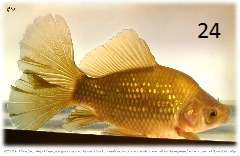
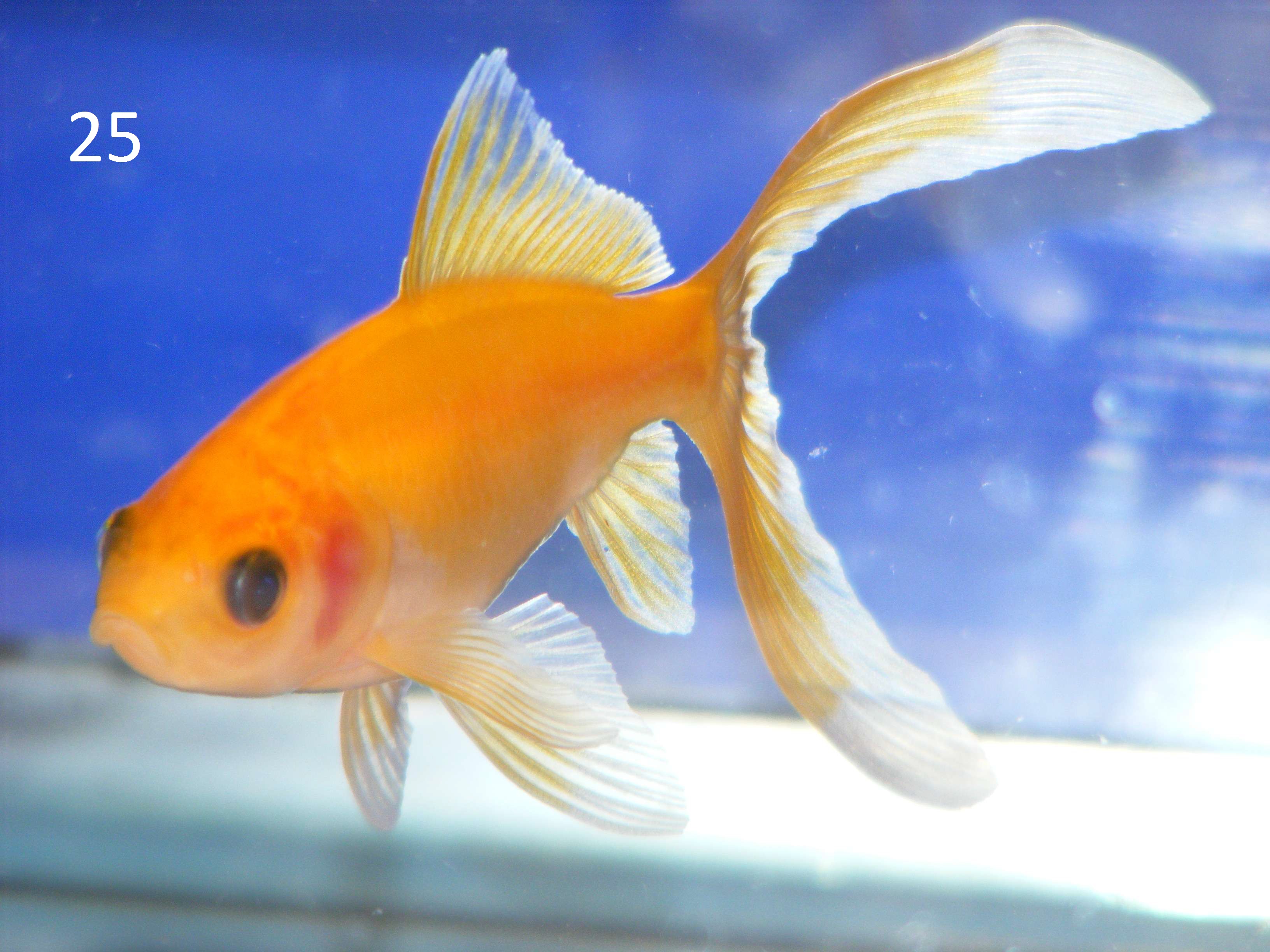
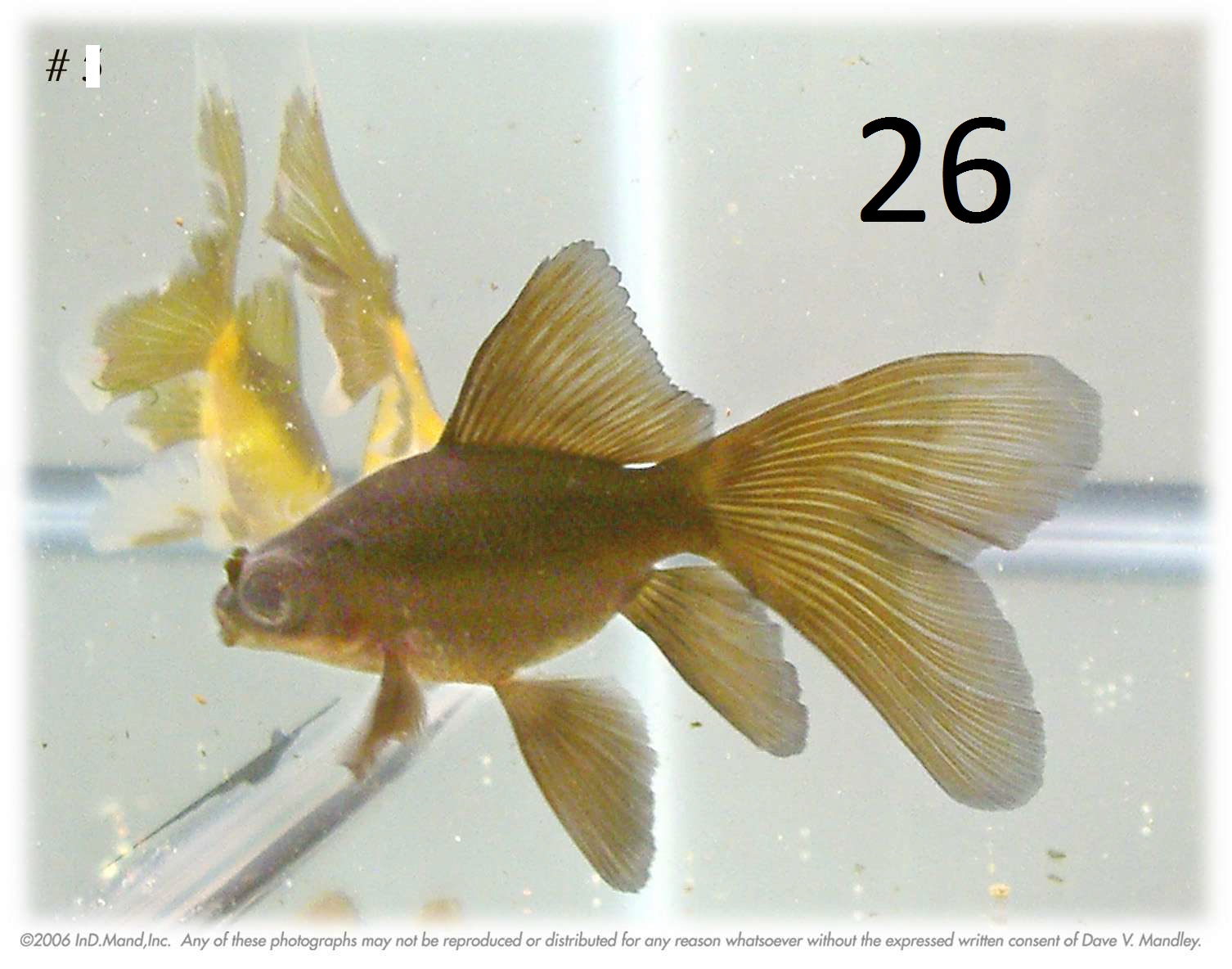
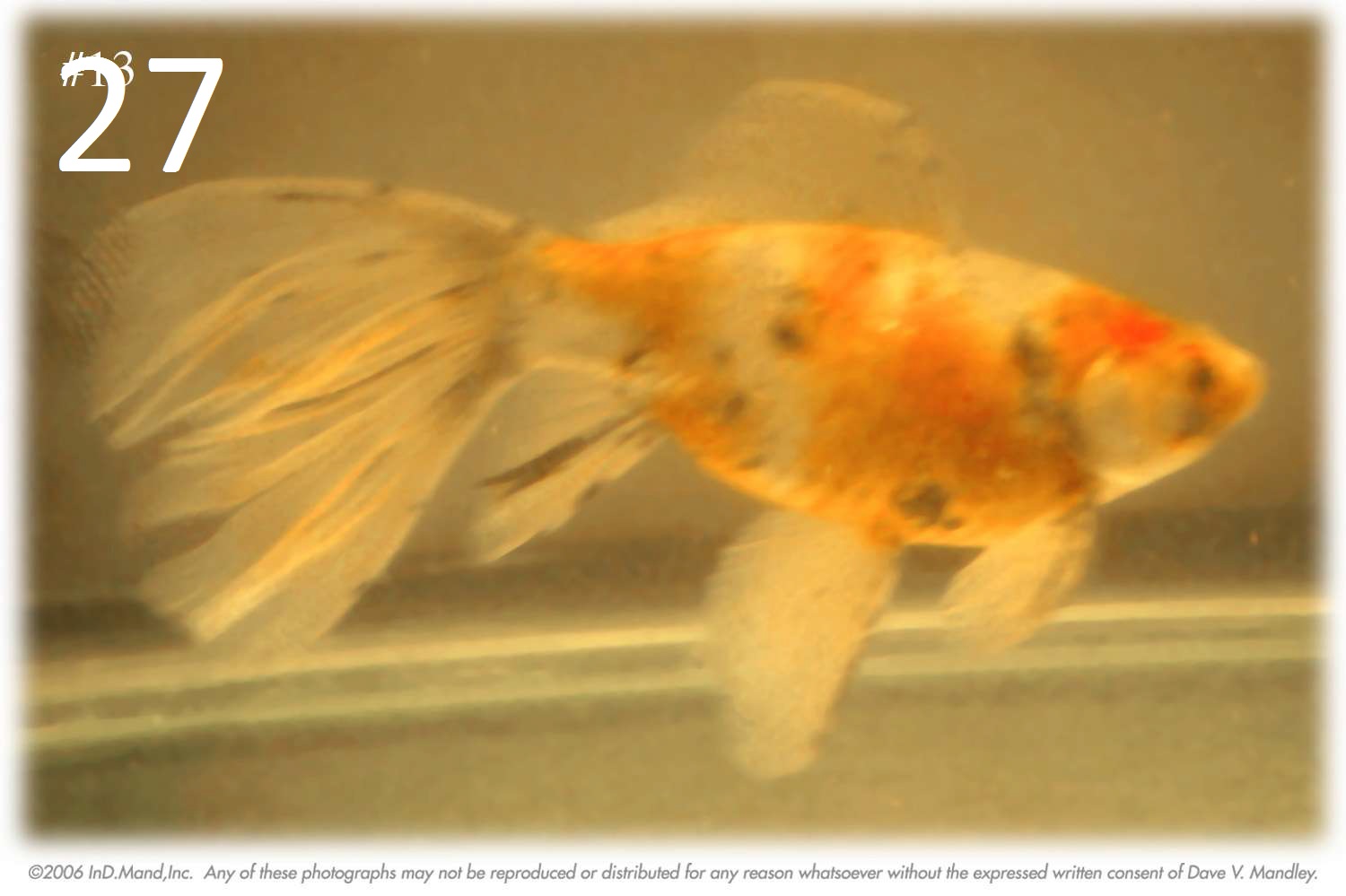
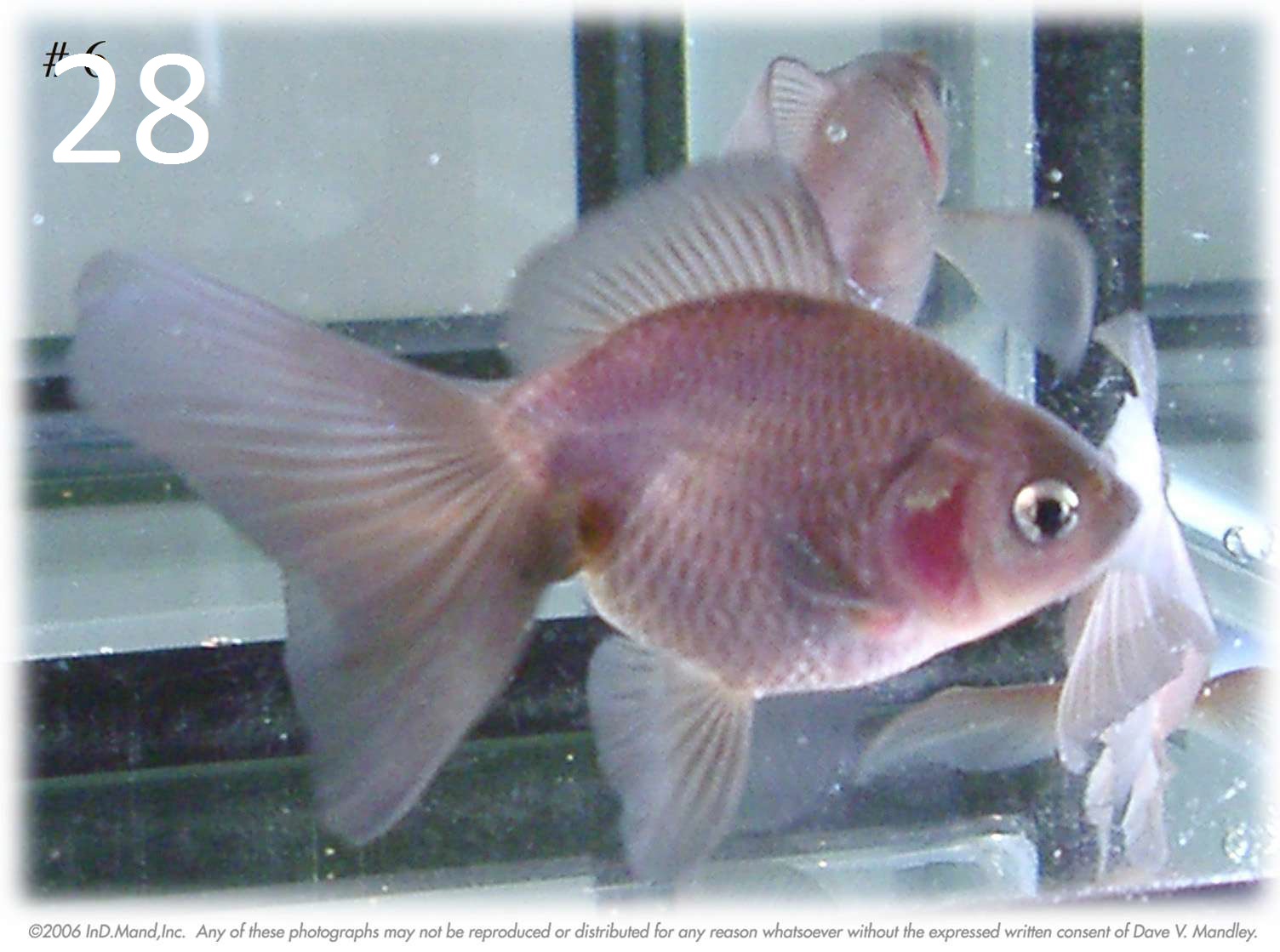
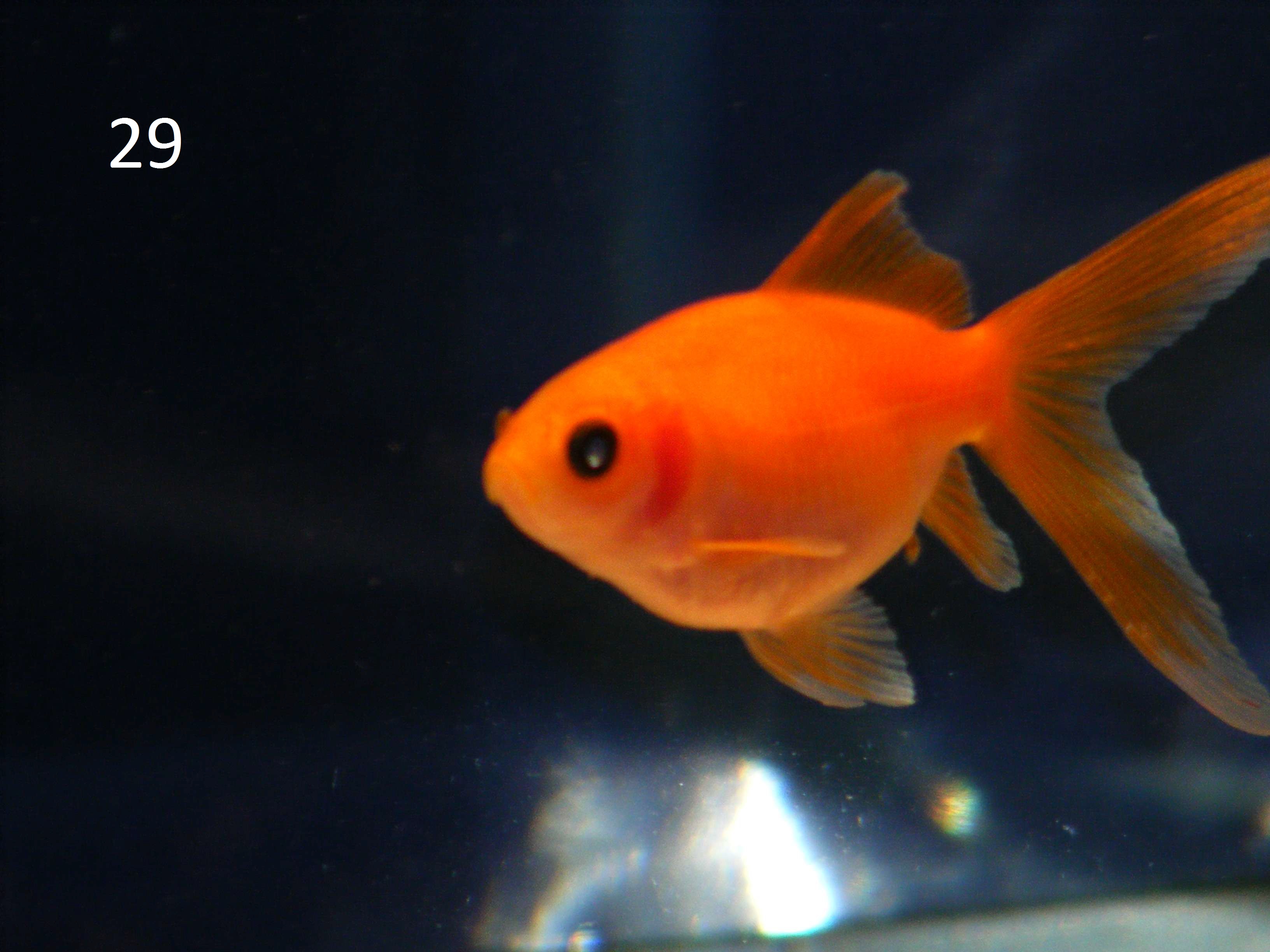

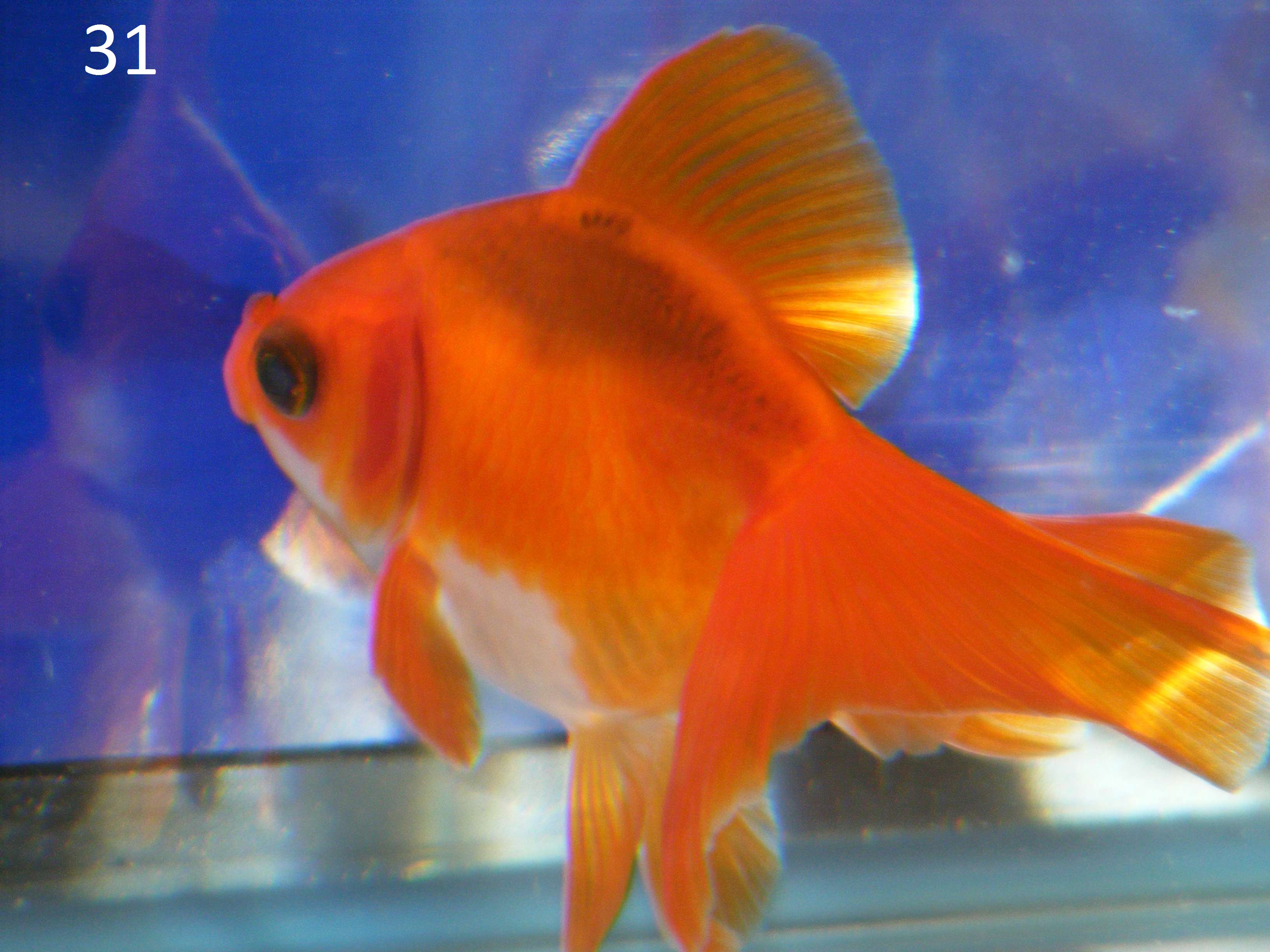
These are my thoughts based on the gentic research done with breeding my fish.
Dave Mandley






